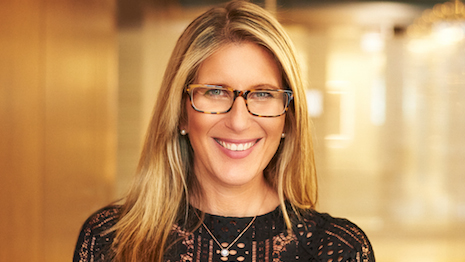By Stephanie Anton
For the last several years, we have been seeing an increased interest in cross-border real estate business, that is, interest in purchasing properties outside of one’s native country. What is driving this?
There are a variety of factors at play, including the role of technology in disseminating both ideas and products around the world faster than ever before. Social media and the Internet have helped to showcase lifestyles in other countries with more detail and depth than the world has ever seen.
This trend shows no sign of abating.
Earn, learn, yearn
Younger generations are also traveling more than previous generations. Once again, international travel is seen as a core part of the education of younger people.
Part of that travel is exposure to new places and the sense that home does not have to be rooted in one specific place. There is much more of a sense that the world offers all sorts of varied opportunities today.
We have watched global migration increase both due to lifestyle as well as economic influences, politics and natural disasters. What has shifted somewhat is there is no one place where people are gravitating.
For example, in the United States, we see a bit of an exodus from California as high prices and natural disasters have sent people north to the new tech centers of the Pacific Northwest as well as into less expensive markets with similar warm climates such as Arizona, Nevada and Texas.
Here are some trends we see that shape the real estate market worldwide:
- Political shifts: Brexit and beyond
It has been nearly two years since the Brexit vote, and there is still a great deal of uncertainty about exactly how the division will play out.
This lack of clarity has led many potential buyers in London to adopt a wait-and-see attitude as prices have slowed along with interest.
Some activity has shifted to other financial centers including Frankfurt, Germany.
Germany overall has seen a major luxury boom in the last few years, with much of the interest coming from other European nations.
Chinese buyers have been active, both bargain hunting on top-tier properties in the United Kingdom as well as looking at opportunities in Germany and beyond.
- The tech migration
Startup culture is fueling the luxury market in a variety of ways.
We have seen an increase in luxury apartments and condominiums in places as diverse as Denver, Berlin and Seattle, as well as other smaller cities.
Silicon Valley’s affluent tech entrepreneurs are on the move, investing in and focused on global markets such as New Zealand where unspoiled green land awaits.
Many entrepreneurs are also looking at basing their companies in Toronto, Canada, where a business-friendly culture and national health care are strong incentives.
- Climate change becomes a growing concern
Awareness of climatological shifts is an important part of the high-end market. This has manifested in buyers, particularly those interested in a second home in an oceanfront location, paying more attention to predictions of sea-level rising or storm patterns.
This is also a time of increased innovation.
Some of the smartest and most influential architects and engineers are creating proposals to mitigate the impact of rising sea level and provide the best life for the largest amount of people.
- ASEAN uprising
Earlier this year, I had a chance to travel to Singapore and Kuala Lumpur, Malaysia to meet with real estate brokers, financial advisors and developers who work in the ASEAN nations including Singapore, Thailand, Vietnam, Malaysia and Indonesia.
From a luxury perspective, these markets have just barely been tapped. We are just seeing the start of top-tier developments both in resort areas as well as in major financial centers.
- The global handshake
Increasingly, we have been asked to play a role in cross-border referrals include the sale of a 30-million euro Verbier ski chalet in Switzerland, and sales from Europe to the U.S., the Caribbean, and many other destinations.
We are signing on new members from around the world, with representation currently in 70 countries. Because of our existing relationships in many countries, we are often asked to make a connection even when we do not have a local member.
The role of brand recognition in luxury real estate still plays an important role as a guarantee of legitimacy and quality. We have seen this both with our brand as well as with the names of architects, brands and major developers being attached to luxury projects around the world.
IN A FEW MONTHS, we will be releasing our Global Luxury Real Estate Report which will track insights into the next moves of the global affluent and, very specifically, the role homeownership plays and differs in markets and cultures around the world.
Stephanie Anton is president of Luxury Portfolio, the Chicago-based marketing arm of The Leading Real Estate Companies of the World. Reach her at [email protected].
{"ct":"UzfXCn9D+i5TihYWBSTJKSNji708nB28eSVaNBdutfXV8dQ\/y0DRouJ7QI229K7PaECdisqVrF0vdtA1RoCf0qdJ6bFAXOP61w0kz4z2g9h5Vhrbd1IIRysbk1lH\/lNmP81TFS51fT+TiJDomqvNlfgZrg8uTDf0qmpSGpndSWw0XLZdkqbBoH6axeV36f1bnc6Xk3r+ZY1goSuR3dOipkiyTBWsHHP4AoxetK9SANZEc857jxJ+l\/8Q7d7LQ066t90Zbbo2DtFWgxG4PEpc9CxAYM8W6jzIgwlynfwRO6+VUXVBlbwsnxyHWmYT1hioOxJke\/laCC1oXWHpF+epK2gH8dF6LjN5K\/fO3Md1pRwQSLOUfvxLpZuXxZ+z\/VWf75LXgORRfPILnG4lhsrWawcBoSaj7BMZg7+j9cumfrqcjbl\/LO0zw\/4pi\/4BbA2fGYqnQCgUFQDptlA7XCmtFbOQuESx7THs4eCzOAxXKQ0OYeDioYgk+D9us1Hn0aDLt4EUUFQK\/K4QlawnwXV5HdowzQESu3nmhKi8+UepKlgfl6f72JcyFufc\/crhqDQZuzPClrUPOPGsWJDKaynBCzvx5cAbz5GZgPi1YB4TbrihF3mPgzEidYLfkj168+iOCgT7H5eru51AJKGXs02WwxcYS4zE8tvmDeAfMBr8AiszQJ3dhE\/XBrwjOuPL4UnjyowrdZAPjGSBzzvHXyoOyw1twCxVmD7ifVXE0x8v\/fSEGiYzELP5HIJc2nmq4Z0u+G6ML5Lc8Qmzv1U21LBp5v4YHWizYCCfSY6RBwBe1Xz0sN0TEfAN\/28pIgZLUZAQ1p+ofdVzLcIFX5l465KQKCbYMl3MTeZXet4\/hIId2DSrwug8GEfUWCxjnQzbIEVkZxSaV51W2mNB1hNG9ijxii47qMMTsXEwms28LDqtTO80\/G5SzdWkWkhb0d\/2MiiAYKdP4sIPxd9RnkCdq9f8q2yj7EK81p\/S+pozhr3z9e+OJsGCMdivpqss0eT4aM3NPA3q+B45I7Xpj6A3q5zSKmxjcyLPnFL6qSSEpoWu6bP3uuywhOx\/\/prrLzCQQu+7YFHSpqOx87K5G9q6NkM2oOnvIfHyDb93QnAe\/F0XT4kkKU\/w\/tD53tg8kTgXP8ohgg6jnqK1BrMbUOy8nZMroR8E\/ulC\/Tkca6Rs8kfjbc416gELGbj8GJHAkKVza8ABAVmDJliEKJ8TFl6N5nd7bkAElxXFpTEmk0Z2v4WfvS+2ONwACZYVyYxH7HRYHTt5Bi1OWS4hIW0WGu6s0IQQUcSM+nOVGAla25KnZUjgo1NjfKTcak4TdfSOEctp5UEZ6OjVFik4CRClnntqSJADSa7DnBOvCU6h5qy0wzd3xmvLxJPGO+JGfzqG2TNAOOn\/OccMdRuh\/peEvh3z9Lr3UyC\/k5rw7ywx9KVzDve2dsZCuIP4YHC3PywQokabJromY41vqsJ8mDWkOP2rr11MwwHocfI8iJ+y\/71L3Rsin44jvsUaGNba+lymYJNMhCNPq5oGWO4BqILS0dGYlizrgJROd6M7OiCDz5weGiLSGaHZpmCoTIYW33fY4LSodJsMiO3ZbzfgEoyiB8DnU46kDiF0Q5FwCjAAirhsXWcVXeEM3mtSkUeTk4+eGSMrL+9nmeX0k7gu\/ax0w2DK7gQZt5BP29AYOEHUngoO9jGnwnGeDtjH56EeLshMIBA\/15JVo2YFzOiHSsYJgzQtMyR5mvLneYLSHTVAoPrhG5zQH3di3kHaOZqNU+SvktlaMEBbxGC2m3+mGJ7c1fVUNDVJsUncs5QLNHGTNRwSyPBKhsQK8wroDwXrBn3sQblHsN9Q6IX54MOKlY5pHTCxIiVC7myZUaetctkHmTHSEDBXDE2RHVNTjkH+cfqbCO1LMgSdarcy\/Z\/St1ldVHIRbvCmstV8mqd0rEkKJ+n40h\/Sv7GrPhqepY9+ErU4W2MJlCCtP1H5rNBw8Azseck6Lt\/TQ5hEhXvy3IHOda356j8RWgv5+hac0DkGDSM8z6OlPN6wbrMjdzW8AhLrhhz6Xa9zjANDkC9bIKhQ2T98U9YLrE7Szvnob5muMpLSxsc5iemx5Q9MOiGJ6lLE6RPWywg187MPNOqudYVKDwTBhezYmv7estW3oVL+zeWqgiPMa52bPzGekwJZTCqIS9Kc389OkfaX3eGTzssdDNeRk1pMkKsSoIdVz50A9sgSDLdw2VWMAN41HKzSXmgpqbVpRvXSYiUvrAkEn4LyZwNmdOpjLk\/2hAuEoakoxsdNiOEn8yXL0spfAtdLhy0G1CZXCQOtQvx1wJauuT48TKPK7HetJSiZXLtey2jE2jEp1aJazvEvVMtiJtfOUetFJG\/NbGjEmoyoIjBy3zwMRPgU+XwWJIo13HEN1V741QASw0A6bXoCDMUuoZYgVfrWRF0JMJses9LwpdyZDYmDqbFBWO1swl+53tK5PtnX4K9LsfCfbza+Ews325UPgzwiHiXQDvQxoiYmpoWOmlk8g+shOEO4FMfh23MpsRDkebBk6gWwCKGNnl2YfB0ZO8OkJ0AKdglhPwT1eZlo2jbagQaQm11he7gmejldAZOPL3MtXi6MP6X+GfQ2Mx9QskCSfQQoNEEnIVP4jB8SveQ4eCSrLRqU\/0o4oYlY9JylRP7PNhWVwtZH0GIugej2W2yKj4GaH4FO4OwiXC\/lP1e8+ds+4eyxjrd02cqldNsocI\/dzLE608rGN6A4a+FKB0GTVI3WANuStqJN2rinlgd+ooopZG+JLAybHQiWEhMil6lSbPUeoZpYpw6roTbJZOJ\/CGqZwVgA+qI5mLOj0sQsgUOYGLMg2pSFLCMc8EK6C0lN0t6MB2phhWZLRcm91AGFfE1AbZ8qJMTOHIO8tCsLPCIhRMz7BQWQgMorzab\/cavjFkWc1xVlV+tnzj6vm7JzuABs8pR1Nc0iaqF0BhDl2rwmE2FOhKjOFh3c9E6HqKeZij7RkHWSdbGJ0S9h2qFWc1GGUDCuHbDjxQyaw2XyH6L0hVXbe+lQ1fwUaSki5wyWjBcPSMuPCURqEDTdnsCmwpIzBdBU5K2p+g7aDJVdUYEkQUuHza+4ydanb5gEwIslSoB1gqWOg+W8xIKqJ8adKhkpzlhr1+kaecMWzbDJ5odcJq+DTZ6QzCn75+cZdMX7SmzHJ8grKMLyM1A6r7qRkM+2bKXTnub37GEYhEe9oNLS\/L4fZD26BG5vio1gw+ZPZrscsdof7zgT8M8Ql+JzBuJzD2o3sE0UEtiVrdnR9PCm2mIrJXAHn9lnx1NSrqHG3HvnWjwYbDWCIrnQiNsR2YsXfAdple6SHL8\/m+zAVNMTL1itYQycEgE6F70MxJOOsu8e7FKHoJmuia\/+5fNAGv18eX59Ov2ISnaIMQ528YKstAeowRGdGl0GZa8t1YeTGGeU98Gb1Xdtr0HPAfuc7cW+iY3BYyGb4IIsS+5Bbu2O6gvYihLlWutmP\/LhfaTbvD2\/xatv4s+\/yDTNBm2yq5pPyL94xI8kHbkWWKKorph9KZXLAv0WkRMi7MT3YzUETNClkvCSXlVcOw992DQTUAdwICWhQm5TJWSKtXgZoZyAyQ3JRvtnKbdtubs\/JIDNvMQkGs020URIq5LWzu0mrMz7doB\/abpCX0tnls9Vqt3oFEP1W2PBbGAdHOmJ844vKBRXqENLG66+1ZKguoSdNCzWquHNid7Yg70TdAePozee6KiXP89kAiZfqReZcI2ZkLmh2CWRpzMEFQVBIMdM+9Sopudi7ZJxfO5TC0hnU8HWiurDgVpPCLev3zOMK\/\/pimpadyBEruM+7XPufrONHzXE9dPv+tqjE4TCcO4OuyvBkMyjXNgsA7B5Ojbm0\/g4j4MmqEfL456OhHnh++qh0VV+MGx7uoW9ZKMhxQ\/Ohpm9mGn8ak4dvm7E4e3XR3nMTXv\/nWeS1EVidsAhsX5IdiXa91ufySE3nxo6E7kAhCpHVzGz1r2a3H8y21+xjZc13FekbKdO8DayoUmRFxe7n31DamcC4+ctXplUaq5T5Wl60k1iK75rYwoZnMe\/sn\/Kx+aEzpCeA8SetKRQH3xvRDJkb9VBVdzd5eh9E8zTfUKxl\/e52+R3WlaOQBvgUvs\/0CEXvu95FIiOgHxmseS2qrDomkOjjnt1SHdjMJb6lmOsPZUdUb+Jxj72UqDw7zW6wDc9ckiz4V9mEcucPUcKbON0M0vIgcJWOq2UUyXoocL546SHyN+anEKrcYBq84LnYpZvYQnAh9jZR1gdK4V0HeA3ps9xHQbYX0NTZe1UbqdfC8DPaRs7D8zL\/riwrXoVoTo435155LvFuT39Rm\/E4vJnhDx3z\/PZeG9UJT99cqTIqB\/jmc+m0CrVt9Mv3pX\/f6EGFyg0jPitBpHHdmiDRRH\/slUNc5LMHGGgIR3mpCqwlcoLzK4waH8dytVSn5+1maKvsQ93oA7V0j4J0aWEG3jePK7ZnAA5d\/0WpIufhVPS8CnjsTGJcgIRMB5c\/1fwAVb7ekMqfDgQMW3yNH8EnQsEqfYwN55Xoo0xeLkw7pGhjS0dLdBNhU+s6i2MFxgKAPO3832SD0UXjbc5\/Y1bRLwlBgsQfzFq2EpZSNhd3\/xt3eaD6pN5dL7nnh0UG2s9A+ZLmckyagTuMiB9JzSp9r9v8FiVDDJqWMy8EVkWqqh+KDv68xdD+CFnwnIhIsEFTkChtm7OXZqMObDKv3bx15jdqWejYMP7DGybNrO0qtOiEJvMnKVbqpbVdOHIQ\/w2d2qfgJXK3sSDB4912+ZNGFUGyvNa2LQOGiRhPdWHRscOfozCIWcYuoVHcWQyJNtpVbJB6zqghR9tB1vQGJMfA4MQAjH5hbTixcaQkGScqhX565X8\/PRpMM09hX3NF5JGDUC3WeG8H\/N6hMAMmFBb32xVnnqBsIegNxEPdRWXhMtDl9KuYIcVl47cXQWMwLIGmJunDYd0D5PdZ9BgYrGUpjWxa+FQlyW5CfSW1rbh\/htIXJFZf0eex+OkFLp1df2O1vL3D5fcef6ceMSLir0kY5HgWTBz9V84qh+9o4DSh1tuigwFS+6YebYL3rF27y\/U+3uBiLlz810Pu2KK73EGmQbaogBWfz\/Fy9fsS7aDOXctvQYu8yWdvq2fxMtBzuOkoDeHOslW4SrmescsMCQZpZMwAwU32zfKYdI9hf\/hWASWNo8gVQPHIq6Wko71O0NtkriVF\/hofW34fQzCjt\/RoTWlS9Yv\/b9RrXbYso2qpVf7WTXnxdYb6VSnvqMweuyBZrR7kIGDUDa9tRavD7h1SzbPormDKCKQWp6b75uWgGH5X0nQA2EVQ88mIr4bAgGit9l2nKfhgSm\/kyNa28Y2vkh21YzdHQ8f+EJmNzWdACXnss15vP+5gU89xDmDaP5HA8oMeVztwZjM7iZc4XSuWtKcXDTl9T0chZJu6a60NMJUTJ2h0X90hbHAlLO3s\/ZN3o6qVBajJQA\/\/fOB8Fj6nAUtxq2WUsrtpuWSdszEuuPMe+6F82shc9X7OGR+Eae1nrqDvXxuBn5EcSdUy03VMAjYvVh28MKIWVSVhuFq3T163U6gAsIxV5\/esGHhwW2xtMIBRctJWYC8XTNkJEXed6p9UXT5LptgBW2gFMOIfOoTZkdGHCK3ducauZMsIew0fdwHyVaaHCW6F3pBeKhYM99mjeksCCNV\/EMiRxT0hYN3qy4bBQHgtcgfIznzJFbW7eLEAPVNg\/i4BenkYyJbRxgFt\/d8l40ottZfHdIjU8uZCehxeaT\/hv2RBxXwPPfnBh2KDiyOHTjb8S15Om61jdwjHEkeOD8BtfQEvwbhHHyLzQa6rSZlwLS2GPyd\/Oo741vHUIaUYw+\/JQ66nQoTvQxIrVETs0A0hk8QXHuTCrgaZrKGTNIwH113hFwYc6nvkkzWA8gETVFS\/Ed49vy1MZueaTclghbK+okyV6nmxQSBru75APFAbok904A2nGM53voJR\/Hvoa9zOeEGCuuqrbHviWaZj6gqKnqygTIVde8iS4vg2sLama0W4fcYQKR8smhuKbCIOEX1f7b6l4+5JOgjO4vBmXKTla3EGA6998SVeCY9Q+8uPoTjwvqqIQ2o\/mhgXe2ED1KoIi1pZgX3vuvvB6pCzThl9Q74hsrSV\/5lMKZ9K5fH2R+rBe6vitaMtkhPkkpnSsCpE6025LS1oZKgOQv1UPUBoSjD8pEf\/tA6wjOn4jr7ucilVTaXE2CgZbs2huSwQyhbMHGkOm1pnFjKN\/boc62aBocXvwVYBE951sp5EpgFQCvzaCLnQp+8VrU793+bHaPhi0bYNeeZF9b8va5gJsruT4j8dvbM1U2EP9cJpTLii7r51\/ffmCvuyl2xsoozMPI9dghGQXZUeYClrWlceTA0ATVXJIkD8+9oxlkS921kYdmnpD0YV5N6dbRHC5t4dYPxocATfqmFzXLAdRbZUN7ljXjcrfrqUWuUbT+dmyYNB2If2J0owvci6VpRO31jpF8rc3Rm7grvZZ9+6V92RuwKKFsE4Aap5\/6em3pxOHQeIiSzboi78UEmgev2cWa4KOQUqJqf5DHdv9guCfGxPPfY1E6\/D3\/KJ8hYWNpoKG1Z1dTAW8GjfVG+fenoiaX4n+wewxd0erGVJFwf43b0jW3hwdkCvq2nig\/VhWUTA8KAgEuOH48UtWeQb02N1bw3O65PTcmEjowcA89k1tienbH4SaNI\/rBxMl7PYbAPgNrJEaaRqbgrkqD89HrTrzsaQG\/GB2iwbdERRFpCzuUeJesTayKRmsEpf+iQ+lMiW74UX8NIrlMEjyzM40+pyOxhfnRPSw8rVSXqIQYvaNSGn3u0i3q49of8VQBD73P\/9mzSGgx1+wBbybnlVkQxz7IyfPD6Umpeo3K4w5BCx5a1QHU10Yqh+bDYAXOmksfBlMjVHCpEhU116Y6yZaEfXlykYk3rMKgN2wsbLfmkK9HCExl\/QdVPfaLlI7a8bqvpwvlUUWBkSgWcxZfuEGM2T6LuLF5B91U28A6TjXMkeD7SUb7OjjA+L7fG9ee5LFP6dc6K7dlyPVZ0G5lvp9TzibYRiQFriWQEIiqErFDx6cbXHeKgXSzL9eEVV9uzB3Teow7L6IAVWwcyBBpbyPXafPEtWuWMBo79x429qiwozDFdokWnlREZuuud5WrSiiMm9UZRpvO+dmkBN5NeeZcXijYg2RW5nRBaM6xmEAzEXE3alnS9Di3YKXOV\/WEohLh4oRnbQlykbTafWt9j7Cg0Dn62SMiMZYIuFPCF6BwZa8eepnS0MwAdYHHcKPnc3yl8Zn8c9lfNn6JbkX51dSiUlBi3G5L4z7VlDIj4dHtSTBqTB8b\/xeF6WbzHDrRZ95vUGVW0vIdCttZq7Bvdu0YG7Nm694YAUcHLMFhFANFCVbB356lO\/NiDn5ZYwJ63\/ZUKi5ahgVTzEVYNgIbBWcHHljl0tLEXaVSXfFFqLneLPqab3kzHy9ivDpLHBhDS1+uKC+gF54FxftLwkPlQ25rvDwxSQtEFvwMp2LTts3Qq7aDOma2XP9rgVMdjMsYPZU09s6TpHDABqWlUOSFs4xU5IE30\/F8mdFLulNFdqcF6Mzl\/wEybbU66OFRQ9h5VPh+1jkO5tttiE17J9rPM57NsdKLlMcILlebNvZQfD4Kta\/9wZqReciXQDFgJnGvVxWCFTtNj3cgAGzb52EhiOe0RnU1IXru604dudYWQBap7o+TuclxnZl0XKSM\/bWoBJB\/g7KzuaXli\/Hdyij9B23psHOxPjcrdqZTT2pvCaNF\/jcuU+7NBIn\/CEGWQyRXrwPO6gLP4KSjx7OwVF+\/3Ns\/JzpTmHZlK3BJ4jKEtkBWhprEyPA==","iv":"8fc8888678a5e37ae94bcb7568853fb2","s":"0e366a86d14f596f"}

 Stephanie Anton is president of Luxury Portfolio
Stephanie Anton is president of Luxury Portfolio